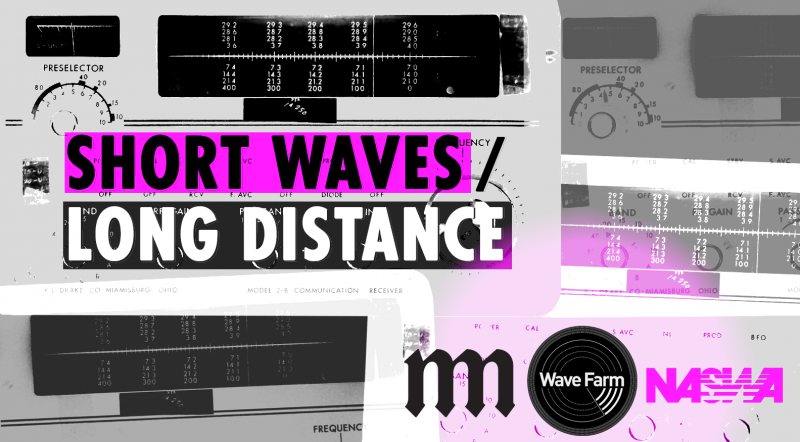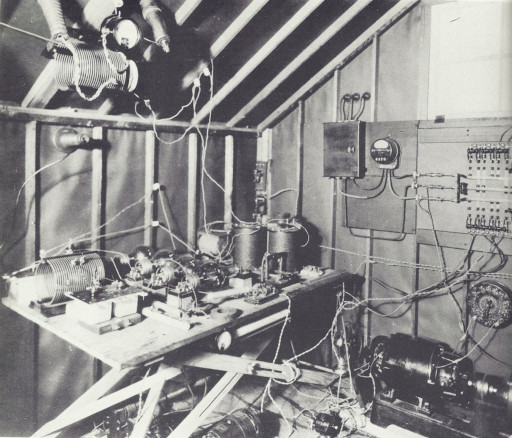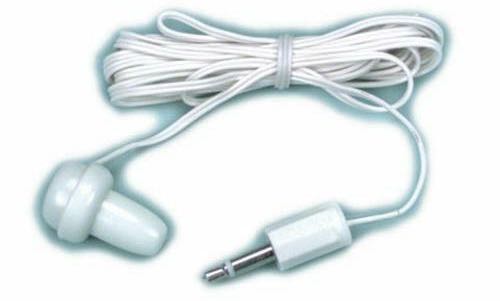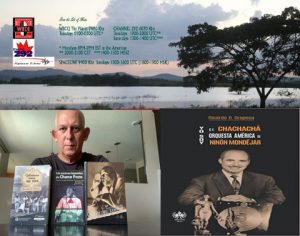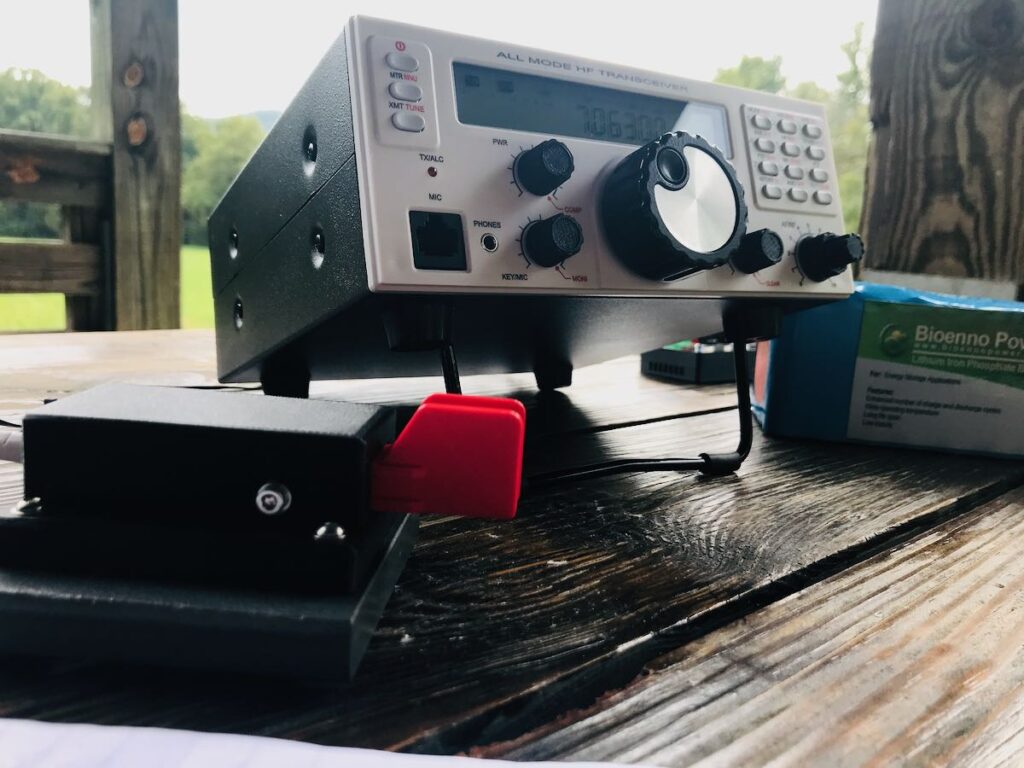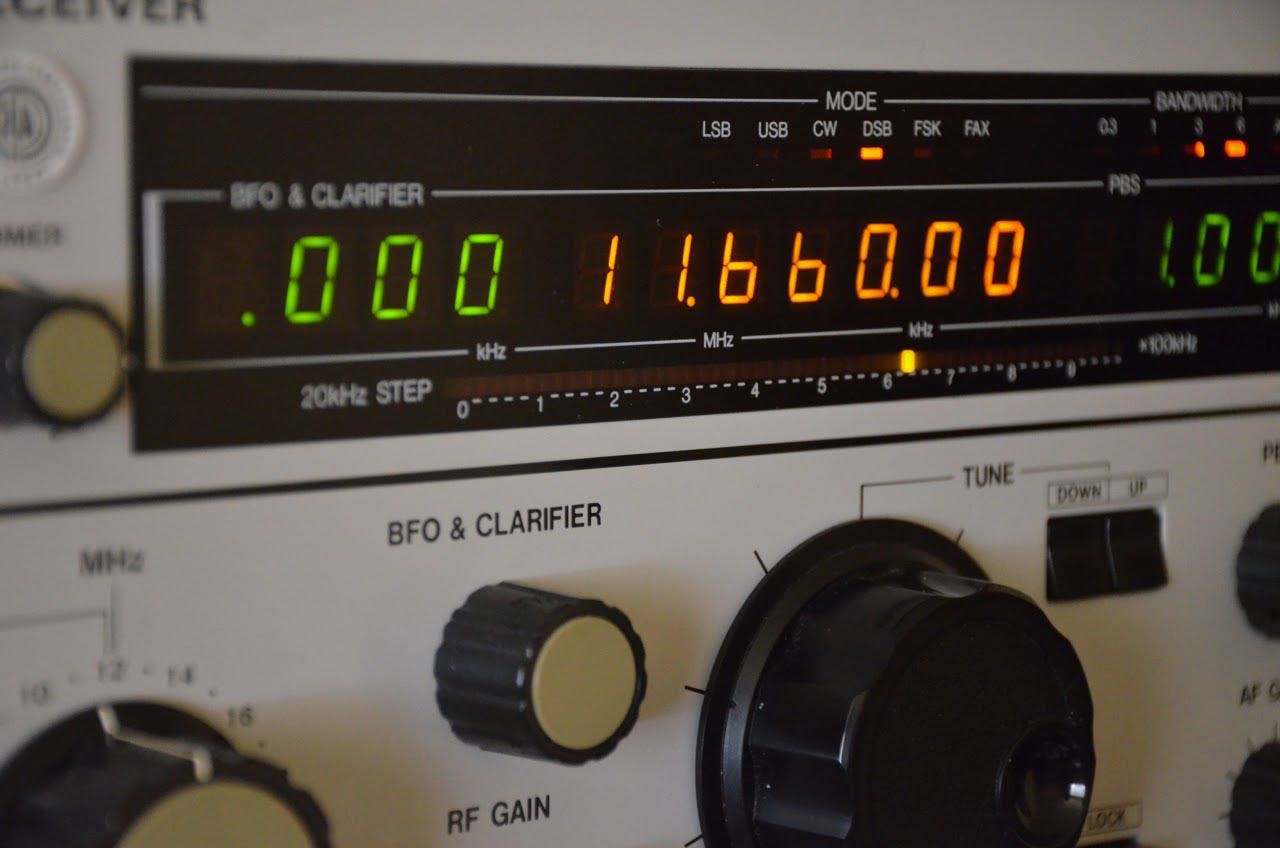(Source: Wave Farm via David Goren)
Short Waves / Long Distance Open Call 2022
Wave Farm, Montez Press Radio, and The North American Shortwave Association are pleased to announce “Short Waves / Long Distance,” an open call for works exploring the sonics of the shortwave radio spectrum (2-30 mHz), and the experience of long distance listening. The call is in conjunction with the 35th Anniversary of the Winter Shortwave Listener’s Fest and Wave Farm’s 25th Anniversary, both of which will be celebrated in 2022.
Selected works will be:
- Featured as part of a two-hour segment from 11pm-1am (EST, UTC -5) during David Goren‘s Shortwave Shindig held during the SWL Fest’s Zoom Conference on Friday evening March 4, 2022
- Broadcast live worldwide on shortwave via WRMI (Radio Miami International)
- Broadcast live on Wave Farm’s WGXC 90.7-FM Radio for Open Ears in New York’s Upper Hudson Valley
- Streamed on Montez Press Radio, March 25, 2022, 2-4 p.m. (EST, UTC -5)
- Archived online at wavefarm.org, and shortwaveology.net
Submission Deadline: January 31, 2022
Submission Guidelines and Instructions:
- Submissions are welcomed from all genres.
- Both pre-existing and newly created works are eligible. Please note: Works submitted to the 2017 Open Call are ineligible, regardless of their selection status.
- Works should not exceed ten minutes in duration.
Shortwave Listening Resources:
- Shortwave Receivers Online: KiwiSDR, Global Tuners, WebSDR
- Frequency Guides and Schedules: Short-Wave.info, ShortwaveSchedule.com
- Receiver Reviews and Listening Tips: SWLing.com, DXing.com
- Shortwave History: On the Short Waves, The Shortwave Radio Audio Archive
- Artists seeking additional ways to record shortwave sounds are encouraged to contact David Goren for guidance at [email protected].
Click Here to Access the Online Submission Form
Jury and Notification Schedule:
- A jury comprised of representatives from The Shortwave Shindig, Montez Press Radio, and Wave Farm will review submissions.
- Selections will be announced in late February 2022
About The Shortwave Shindig
The Shortwave Shindig is a live immersion into the wavering, noisy sounds of the shortwave radio spectrum. Live performances, presentations and extended, multi-layered audio mixes combine real time and archival shortwave sounds, taking the listener on a guided tour through the atmospheric neighborhoods where shortwave stations cluster. Reels of archival audio and a bank of receivers are on hand for tuning-in to the distant, elusive sounds of the shortwave bands. http://www.shortwaveology.net/shortwave-shindig/
About the Winter SWL Fest
The Winter Shortwave Listener’s Fest (March 4th-5th 2022) is a conference of radio hobbyists of all stripes who listen to frequencies from “DC to daylight.” Every year scores of hobbyists descend on the Philadelphia, Pennsylvania suburbs for a weekend of camaraderie and talking radio. The Fest is sponsored by NASWA, the North American Shortwave Association, but it covers much more than just shortwave. Additional topics include Medium wave (AM), VHF scanning, satellite TV, and pirate broadcasting. http://www.swlfest.com/
About Montez Press Radio
Montez Press Radio is an experimental broadcasting and performance platform. Founded in 2018 with the goal of fostering greater experimentation and conversation between artists, writers, and thinkers through the medium of radio, MPR allows different corners of the art world to interact with each other in person and on air—a place where media finally meets flesh. We’re drawn to art that exists in the unexpected, the authenticity of sharing without a script, the sounds of ideas in the making, conversation that forgets there’s an audience. We also like books. All in-studio broadcasts are free and open to the public. Stop by when we’re live at 46 Canal Street #2 in NYC or look at the upcoming schedule to see if we’re off-site and broadcasting near you. https://radio.montezpress.com
About Wave Farm
Wave Farm is a non-profit arts organization driven by experimentation with broadcast media and the airwaves. A pioneer of the Transmission Arts genre, Wave Farm provides access to transmission technologies and supports artists and organizations that engage with media and the electromagnetic spectrum as an art form. Wave Farm’s Residency Program provides artists working within the Transmission Arts genre opportunities to research and create new works. Wave Farm’s Archives document and contextualize this work, including the Wave Farm Radio Art Archive, which is a project of an annual fellowship program. The Transmission Art Installation park features long-term projects installed on Wave Farm’s 29-acres in Acra, NY. These projects amplify the environment revealing what is otherwise unheard or unseen. Wave Farm’s WGXC-FM is a full-power, non-commercial, listener-supported station in New York’s Upper Hudson Valley operating out of dedicated studios in Acra and Hudson, NY; as well as pop-up temporary studio locations throughout the listening area and beyond. WGXC transmits 3,300 watts to more than 78,000 potential listeners on 90.7-FM and unlimited international listeners at wavefarm.org/listen. Hands-on access and participation distinguish WGXC as a public platform for information, experimentation, and engagement. https://wavefarm.org

